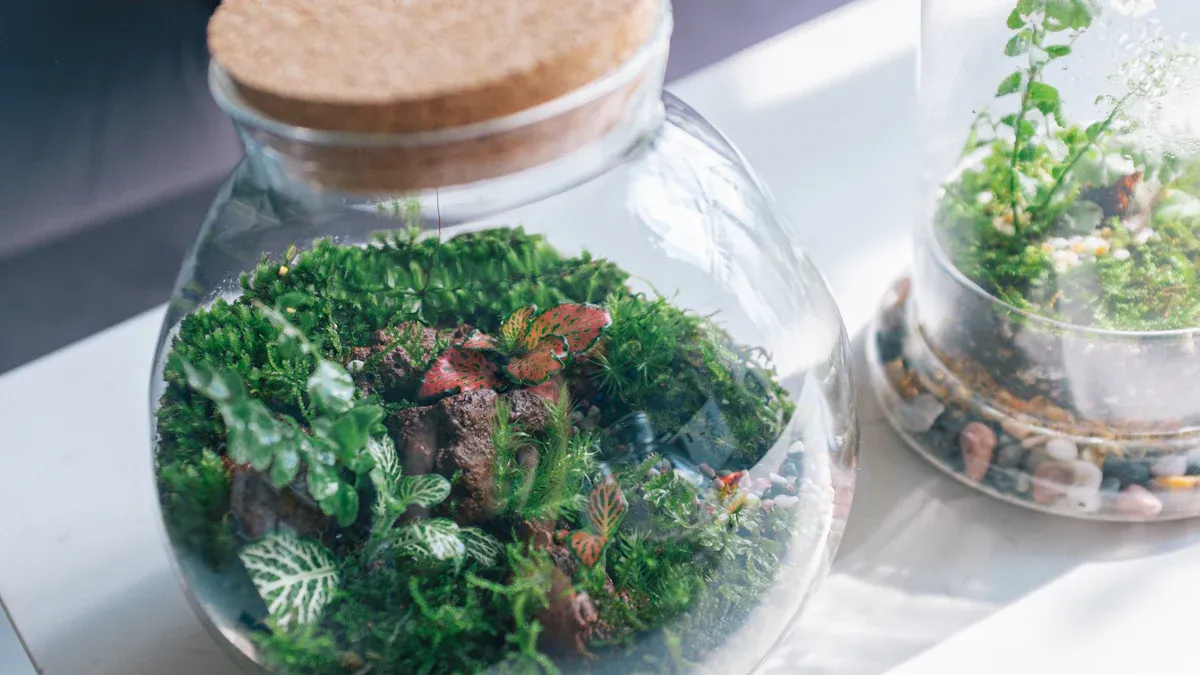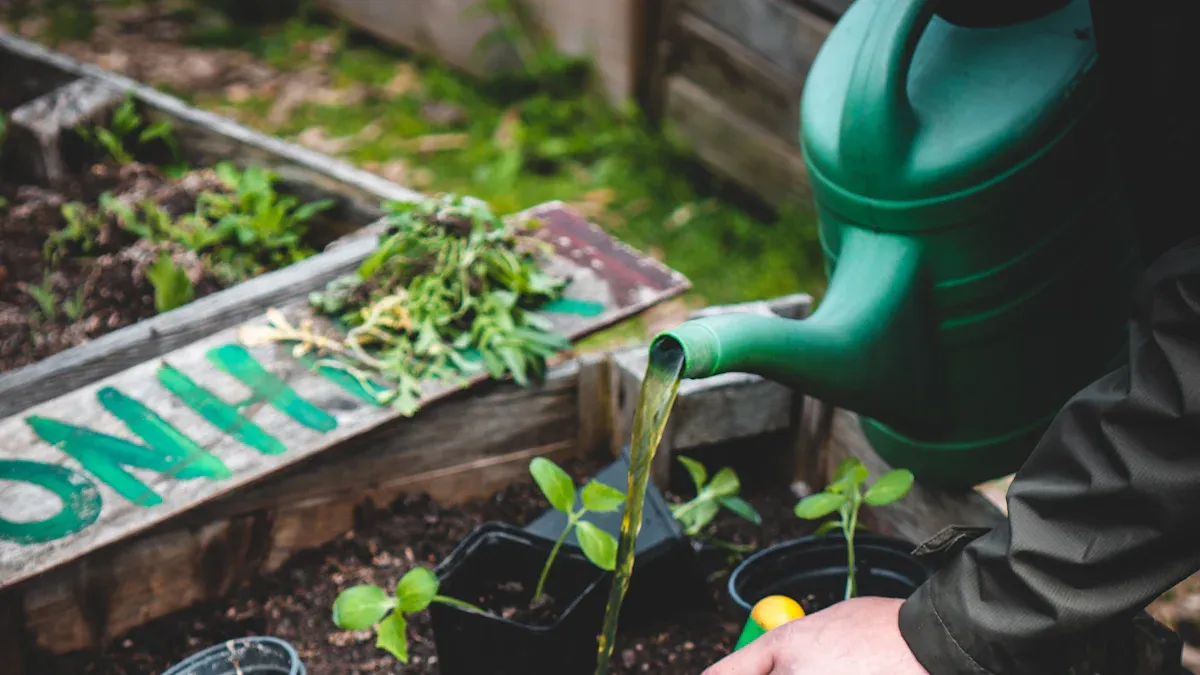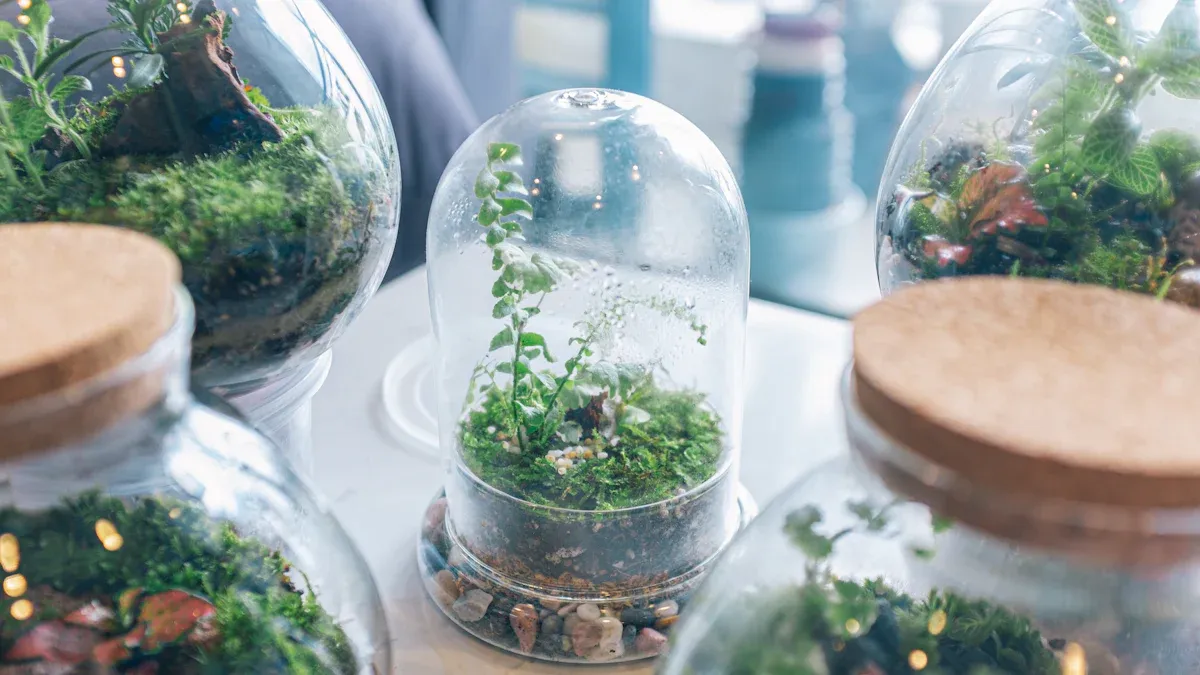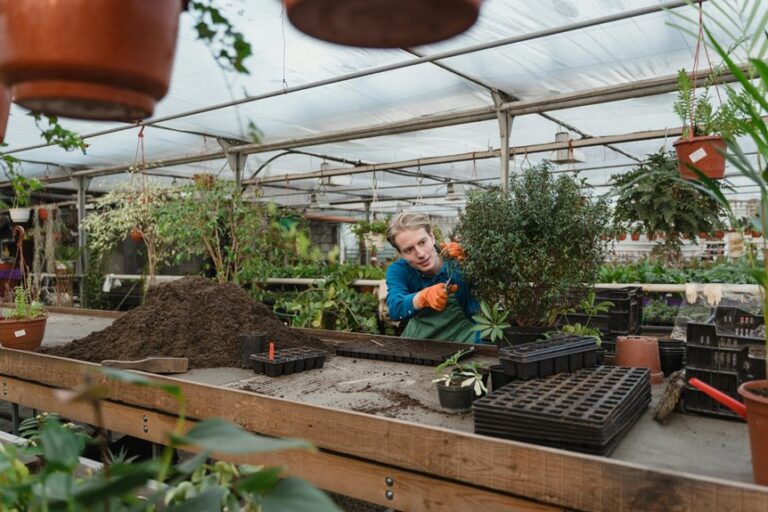
Taking care of your outdoor terrarium throughout the year is crucial for keeping your plants healthy and vibrant. To help you with this, here are some Seasonal Care Tips that highlight how seasonal changes can greatly affect their growth and well-being. By understanding these shifts, you can adjust your care practices to meet your plants’ needs. For instance, using tools like digital probe thermometers and hygrometers helps you monitor temperature and humidity effectively. This knowledge empowers you to create the best environment for your plants, ensuring they thrive in every season.
Key Takeaways
Water your outdoor terrarium according to the season. Check soil moisture regularly to avoid over or under-watering.
Adjust sunlight exposure based on seasonal changes. Ensure your plants receive bright, indirect light to prevent leaf burn.
Monitor temperature closely. Keep your terrarium in a suitable environment to promote healthy plant growth.
Inspect for pests regularly. Early detection and treatment can keep your plants healthy and thriving.
Consistent care throughout the year leads to vibrant growth and beauty in your terrarium.
Spring Seasonal Care Tips

Watering
As spring arrives, your outdoor terrarium starts to wake up from its winter slumber. This is the perfect time to focus on watering. During this season, you should check the soil moisture regularly. For open terrariums, watering once a week is usually enough when the soil appears dry. If you have a closed terrarium, you might only need to water every four to six months. Keep an eye out for condensation on the glass and dry soil to help you decide if your plants need a drink. 🌱
Sunlight
Spring brings longer days and more sunlight, which is fantastic for your plants. Make sure your terrarium gets plenty of bright, indirect light. Too much direct sunlight can scorch delicate leaves, so try to find a balance. If you notice your plants stretching towards the light, they might need a little more sun. You can rotate your terrarium every few weeks to ensure all sides receive equal light. This simple trick helps your plants grow evenly and healthily.
Temperature
Temperature plays a crucial role in your terrarium’s health during spring. Most plants thrive in temperatures between 65°F and 75°F (18°C to 24°C). If you live in a region with fluctuating temperatures, consider placing your terrarium in a sheltered spot to protect it from sudden cold snaps or heat waves. You can use a thermometer to monitor the temperature and make adjustments as needed. Keeping your plants comfortable will encourage new growth and vibrant colors.
Pest Control
Spring is also the time when pests start to emerge. Keep a close watch on your plants for any signs of trouble. Look for tiny insects or webbing that could indicate a pest problem. If you spot any unwanted visitors, act quickly! You can use a gentle insecticidal soap or neem oil to treat your plants. Regularly inspecting your terrarium will help you catch any issues early, ensuring your plants stay healthy and thriving.
By following these spring seasonal care tips, you can rejuvenate your outdoor terrarium and set the stage for a vibrant growing season. Remember, consistent care leads to thriving plants!
Summer Seasonal Care Tips
Watering
Summer heat can be a challenge for your outdoor terrarium. As temperatures rise, your plants may need more water to stay hydrated. For open terrariums, aim to water every ten days. If you notice the soil drying out faster, don’t hesitate to check daily. In extreme heat, you might need to water every 1–2 days, especially for container plants or those in full sun.
Tip: During spring and summer, mist the foliage every 7 to 10 days. This helps prevent dehydration and keeps your plants looking fresh.
Sunlight
Your terrarium thrives best in bright, indirect sunlight. While summer days are longer, too much direct sunlight can lead to leaf burn. Aim for about 4 to 6 hours of filtered light each day. If you notice leaves wilting or developing brown spots, it’s a sign they’re getting too much sun.
Remember: Terrariums perform better in diffused light rather than direct sunlight. Keeping them out of harsh rays will help maintain their health.
Temperature
Temperature control is vital during the summer months. Most terrarium plants prefer temperatures between 70°F and 85°F (21°C to 29°C). If your area experiences extreme heat, consider moving your terrarium to a shaded spot during the hottest parts of the day. This will help prevent overheating and keep your plants comfortable.
Note: Use a thermometer to monitor the temperature inside your terrarium. Keeping an eye on this will help you make necessary adjustments.
Pest Control
Summer is prime time for pests. Keep a close watch on your plants for any signs of trouble. Inspect the leaves and soil regularly for tiny insects or webbing. If you spot any pests, act quickly! You can use insecticidal soap or neem oil to treat your plants.
Tip: Regular inspections will help you catch any issues early, ensuring your plants stay healthy and vibrant throughout the summer.
By following these summer seasonal care tips, you can help your outdoor terrarium thrive despite the heat. Remember, consistent care leads to thriving plants!
Fall Seasonal Care Tips
Watering
As fall approaches, it’s time to prepare your plants for the upcoming winter. You should start reducing the frequency of watering. For open terrariums, watering every two weeks is usually sufficient. If you notice the soil staying moist longer, you can extend the interval even more. Closed terrariums may only need watering once every month or so, depending on humidity levels. 🌧️
Tip: Always check the soil moisture before watering. Stick your finger about an inch into the soil; if it feels dry, it’s time to water.
Sunlight
During fall, the sunlight changes, and your terrarium may not receive as much light as it did in summer. Aim for about 4 to 5 hours of bright, indirect sunlight each day. If your plants start to look leggy or pale, they might need a little more light. You can rotate your terrarium to ensure all sides get equal exposure.
Temperature
Temperature control is essential in fall. The ideal range for your terrarium is between 76°F and 85°F (24°C to 29°C). You want to keep humidity levels between 44% and 60% for optimal plant health. If temperatures drop significantly, consider moving your terrarium indoors or to a sheltered area to protect your plants from cold drafts.
Pest Control
As the weather cools, pests like stink bugs, mites, aphids, and whiteflies become more active. To manage these pests, you can use specific insect sprays. For example, Monterey garden insect spray works well for whiteflies, while All Seasons oil spray is effective against scales. Keeping your terrarium clean by removing old leaves can also help prevent slugs. Regular inspections will help you catch any issues early, ensuring your plants stay healthy throughout the fall.
By following these fall seasonal care tips, you can help your outdoor terrarium transition smoothly into winter. Remember, consistent care leads to thriving plants!
Winter Seasonal Care Tips

Watering
During winter, your outdoor terrarium needs special attention, especially when it comes to watering. You should minimize watering to avoid over-saturating the soil. Most plants go dormant in the cold, so they don’t require as much moisture. Check the soil regularly; if it feels dry about an inch down, it’s time for a little water. Remember, less is more during this season! 🌨️
Sunlight
Sunlight is crucial for your terrarium plants in winter. Outdoor terrarium plants, especially woodland types like ferns, thrive in bright, indirect light. However, desert plants such as cacti can handle direct sunlight. Aim for about 4 to 6 hours of filtered light each day. If your plants start looking leggy or pale, they might need more light. You can rotate your terrarium to ensure all sides get equal exposure.
Temperature
Temperature control is vital during winter. Most terrarium plants prefer temperatures above 32°F. Here are some important points to consider:
Temperatures at or below 32°F can harm your plants.
Frost develops when ground temperatures fall below freezing.
Strong winds can worsen frost effects and damage your plants.
If temperatures drop significantly, consider moving your terrarium indoors or wrapping it to protect it from the cold.
Pest Control
Winter can bring its own set of pests. Grubs, stink bugs, fleas, and ticks often seek refuge in your terrarium. To manage these pests, keep your outdoor area clean and tidy. Regular yard maintenance helps reduce their presence. You can also use natural repellents and biological controls to keep them at bay.
Tip: Seal entry points to keep rodents out. Rodents like mice and rats often look for warm places to nest, and they can invade your terrarium if you’re not careful.
By following these winter seasonal care tips, you can help your outdoor terrarium survive the cold months. Remember, consistent care leads to thriving plants!
Taking care of your outdoor terrarium throughout the seasons is essential for keeping your plants healthy. Remember these key seasonal care tips:
Water your plants according to their needs.
Adjust sunlight exposure based on the season.
Monitor temperature changes closely.
Keep an eye out for pests.
By following these practices, you’ll create a thriving environment for your plants. Consistent care leads to vibrant growth and beauty in your terrarium. So, get started today and enjoy the rewards of your efforts! 🌿
FAQ
What plants are best for outdoor terrariums?
You can choose a variety of plants like ferns, mosses, succulents, and small tropical plants. Make sure they thrive in your local climate and can handle the seasonal changes.
How often should I check my terrarium?
Check your terrarium at least once a week. Look for signs of moisture, pests, and overall plant health. Regular inspections help you catch any issues early.
Can I move my terrarium indoors during winter?
Yes! If temperatures drop too low, moving your terrarium indoors can protect your plants. Just ensure they still receive adequate light and humidity.
What should I do if my plants look leggy?
Leggy plants often indicate insufficient light. Rotate your terrarium or move it to a brighter spot. Ensure they get about 4 to 6 hours of indirect sunlight daily.
How can I prevent pests in my terrarium?
Keep your terrarium clean and inspect it regularly. Remove dead leaves and debris. You can also use natural repellents to deter pests and maintain plant health. 🌿


